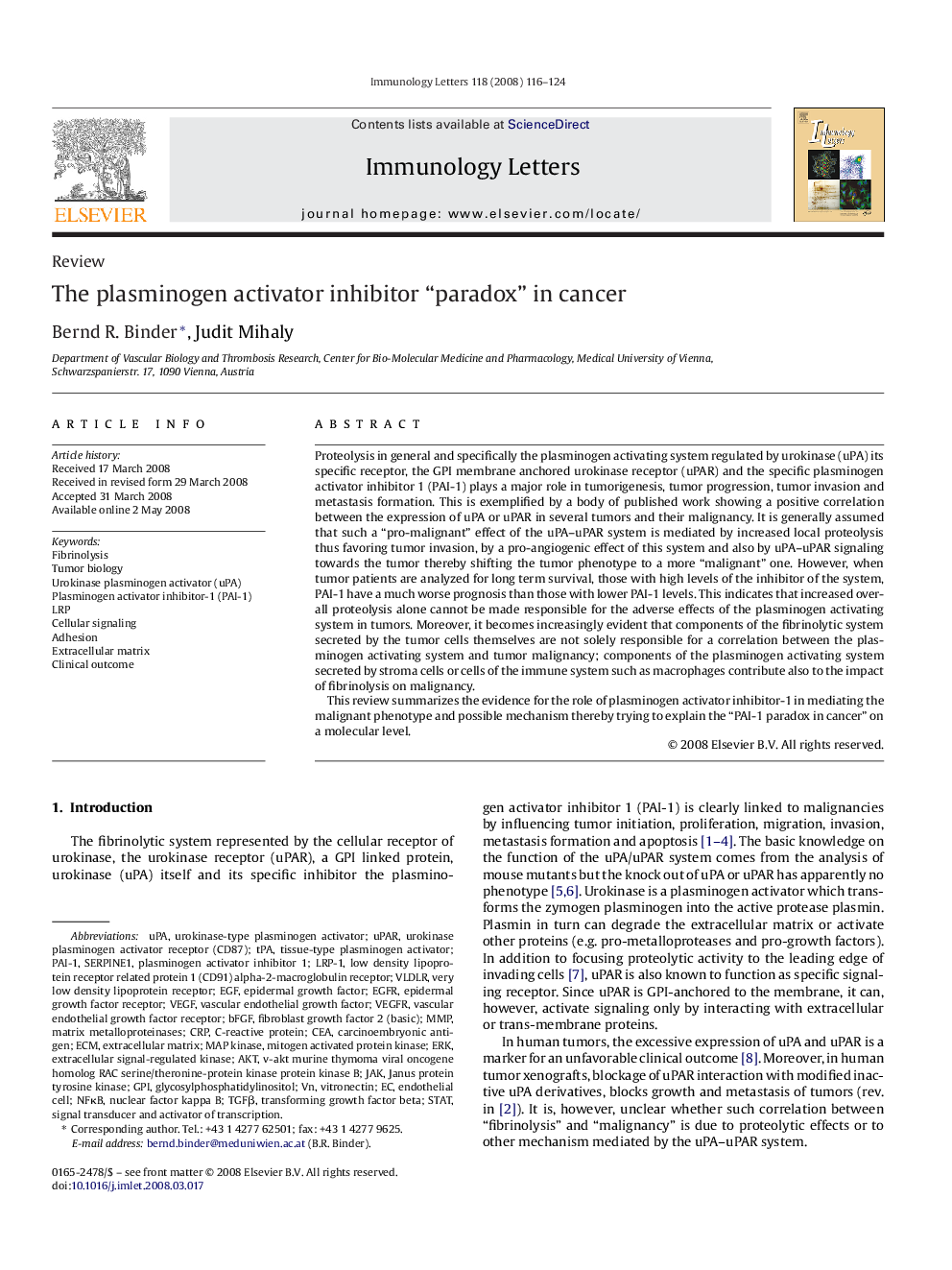| کد مقاله | کد نشریه | سال انتشار | مقاله انگلیسی | نسخه تمام متن |
|---|---|---|---|---|
| 3356139 | 1217238 | 2008 | 9 صفحه PDF | دانلود رایگان |

Proteolysis in general and specifically the plasminogen activating system regulated by urokinase (uPA) its specific receptor, the GPI membrane anchored urokinase receptor (uPAR) and the specific plasminogen activator inhibitor 1 (PAI-1) plays a major role in tumorigenesis, tumor progression, tumor invasion and metastasis formation. This is exemplified by a body of published work showing a positive correlation between the expression of uPA or uPAR in several tumors and their malignancy. It is generally assumed that such a “pro-malignant” effect of the uPA–uPAR system is mediated by increased local proteolysis thus favoring tumor invasion, by a pro-angiogenic effect of this system and also by uPA–uPAR signaling towards the tumor thereby shifting the tumor phenotype to a more “malignant” one. However, when tumor patients are analyzed for long term survival, those with high levels of the inhibitor of the system, PAI-1 have a much worse prognosis than those with lower PAI-1 levels. This indicates that increased overall proteolysis alone cannot be made responsible for the adverse effects of the plasminogen activating system in tumors. Moreover, it becomes increasingly evident that components of the fibrinolytic system secreted by the tumor cells themselves are not solely responsible for a correlation between the plasminogen activating system and tumor malignancy; components of the plasminogen activating system secreted by stroma cells or cells of the immune system such as macrophages contribute also to the impact of fibrinolysis on malignancy.This review summarizes the evidence for the role of plasminogen activator inhibitor-1 in mediating the malignant phenotype and possible mechanism thereby trying to explain the “PAI-1 paradox in cancer” on a molecular level.
Journal: Immunology Letters - Volume 118, Issue 2, 30 June 2008, Pages 116–124